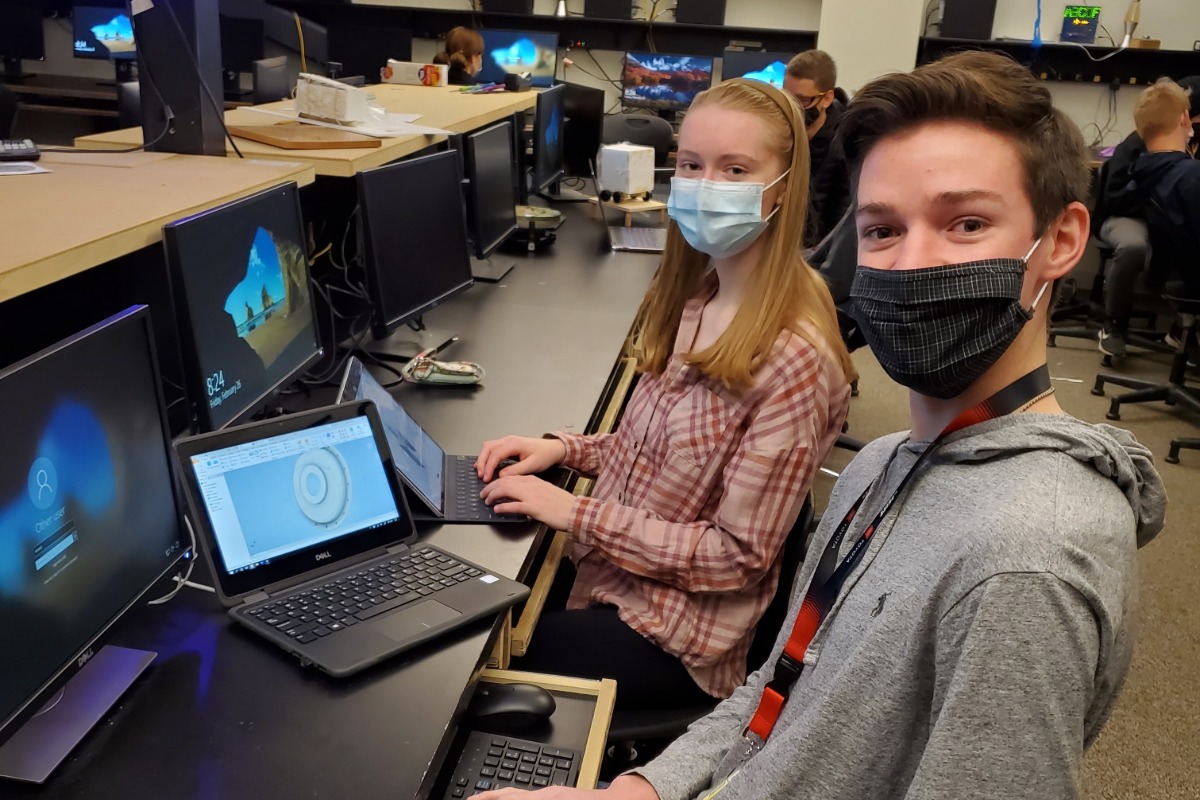Hands On
As an introduction to engineering, students learn the concepts necessary to develop their ideas into solutions. Exciting hands-on learning activities involving problem solving, product creation, and product optimization using the engineering design process help apply math, science, history and English content from other courses. This program makes science and mathematics more engaging, interesting and relevant.
Project learning includes student design and fabrication, risk taking, and failure as a path to success.
Course Offerings
Introduction to Engineering Design
Students dig deep into the engineering design process, applying math, science, and engineering standards to hands-on projects like designing a new toy or improving an existing product.
Principles of Engineering
Students explore a broad range of engineering topics including mechanisms, strength of structure and materials, and automation, and then they apply their knowledge to real world scenarios.
Aerospace Engineering
Students explore the physics of flight and bring what they’re learning to life through hands-on projects like designing a glider and creating a program for an autonomous space rover.
Civil Engineering and Architecture
Students learn important aspects of building and site design and development, and then they apply what they know to design a commercial building.
Digital Electronics
Students will use industry-standard circuit design software to test and analyze simple & complex digital circuitry. They will also have hands-on experiences building electronic projects.
Engineering Design and Development
Students identify a real-world challenge and then research, design and test a solution, ultimately presenting their unique solutions to a panel of engineers.
